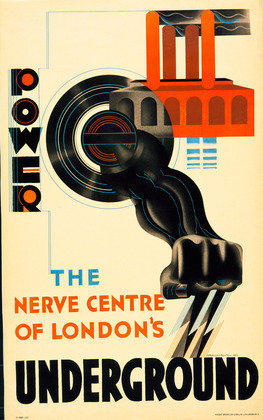London Transport posters, 1920s-1940s
dal 27/7/2010 al 27/2/2011
Segnalato da
27/7/2010
London Transport posters, 1920s-1940s
The Museum of Modern Art - MoMA, New York
After World War I, striking modern posters began to transform the stations of London's underground railway system into public art galleries. The posters, designed by significant artists like Laszlo' Moholy-Nagy, Zero (Hans Schleger), and Abram Games, were the crucial face of a pioneering public transport campaign. This installation presents over twenty posters that speak to the experience of modern London-from the promotion of culture and entertainment to the anxieties of daily life during WWII.

Curated by Juliet Kinchin and Aidan O'Connor
After World War I, striking modern posters began to transform the stations of London’s underground railway system into public art galleries. The posters, designed by significant artists like László Moholy-Nagy, Zero (Hans Schleger), and Abram Games, were the crucial face of a pioneering public transport campaign for coherence and efficiency that also included station architecture, train interiors, and Harry Beck’s iconic Underground map (1931–33).
This installation presents over twenty posters that speak to the experience of modern London—from the promotion of culture and entertainment to the anxieties of daily life during WWII.
Organized by Juliet Kinchin, Curator, and Aidan O’Connor, Curatorial Assistant, Department of Architecture and Design, The Museum of Modern Art.
Image: E. McKnight Kauffer. Power, The Nerve Centre of London's Underground. 1930. Lithograph, 40 5/8 x 24 3/4" (103.2 x 62.9cm). The Museum of Modern Art, New York. Gift of the artist
Press Contact:
D’Arcy Drollinger, 212-708-9747 or darcy_drollinger@moma.org
Architecture and Design Galleries, Third Floor
The Museum of Modern Art
11 West 53 Street New York, NY 10019
Sunday 10:30 a.m.–5:30 p.m., Monday 10:30 a.m.–5:30 p.m.
Wednesday 10:30 a.m.–5:30 p.m., Thursday 10:30 a.m.–5:30 p.m.
(Open until 8:45 p.m. every Thursday in July and August and on Sept 2 and October 7)
Friday 10:30 a.m.–8:00 p.m., Saturday 10:30 a.m.–5:30 p.m.



